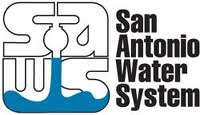Another thing we’ll be seeing more of in the near future.
The San Antonio Water System is now pumping salt water in southern Bexar County as it looks for new water sources for the city.
Tuesday the utility gave a tour of one of its first production wells in the middle of pastureland that will tap the lower Wilcox Aquifer.
Because it is an expensive new project going after a new source, it will be watched closely by residents for possible impact to local water supplies and by state officials for its potential to set an example of a new water source for Texas.
The $145 million project is expected to produce 10 million gallons a day by 2016, when the desalination plant and pipelines are complete. That’s about 5 percent of San Antonio’s daily demand, according to SAWS.
Anyone know what the verb form of “desalinization” is? I’m not sure, but for what it’s worth “Desalinating” doesn’t trigger Chrome’s spell-checker, so I’ll go with that. The total amount this plant will eventually generate is relatively small, but this is just phase one. They anticipate expanding it to produce up to 25 million gallons per day if all goes well. This also has the benefit of not causing any legal disputes with neighboring counties whose fresh water San Antonio had been eyeing. The main downside is that it’s more expensive – five times the cost of drawing water from the Edwards Aquifer. That’s both better than not having enough water, and another demonstration of why conservation is easily the cheapest option.
The story notes that there’s more than enough brackish water underneath Texas to meet its demands, and includes something that I’ve been wondering about.
At about half the salinity of sea water, the water of the lower Wilcox is too salty for use in irrigation and until now has been left alone.
But through reverse osmosis treatment, salt-free water can be extracted, SAWS staff explained.
The remaining water, which is left with a much higher concentration of salt, is injected into the brackish portion of the Edwards Aquifer.
How much thought have we given to all that very salty water that is the byproduct of desalinization? I’ll take SAWS’ word for it that what they plan to do here is an acceptable solution, but how good are the disposal options in general? I don’t think we have any choice but to explore desalinization on a broad scale, I just worry that we’re creating another pollution problem for which we have not adequately thought about solutions.


“Desalinating” and “desalinizing” are both correct.
I think the perfect use for leftover salt from desalination would be something like this: http://newenergyandfuel.com/2011/03/08/a-new-low-cost-and-low-temp-molten-salt-battery/
Pingback: Drinking water from the Gulf – Off the Kuff